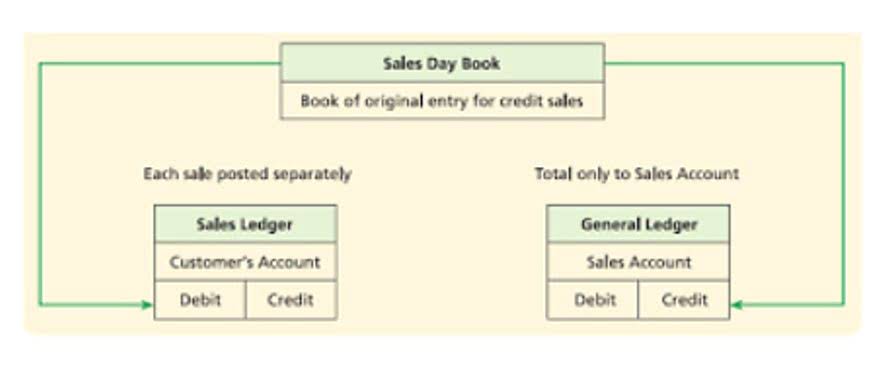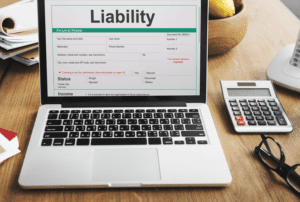Operating expenses, suches as selling, general and administrative (SG&A) are then subtracted from gross profit to calculate operating income. Service companies may use a similar layout for their income statement, recording costs of services and calculating a gross profit. This allows users of the financial statement to get a quick understanding of the inventontory consumed in the ordinary course of business and to compare it to the company’s overhead. When a periodic inventory system is used, the cost of goods sold depends significantly on the cost flow method chosen for valuing inventory and cost of goods sold. In this blog, we have explored the concept of cost of sales, how it differs from cost of goods sold, and why it matters for your business. Cost of sales is the total amount of money that you spend to sell your products or services, including the direct costs of production and the indirect costs of marketing, distribution, and administration.
What Is Included in the Cost of Goods Sold?
- Businesses can use gross profit to evaluate the effectiveness of their pricing strategies, assess the impact of cost-saving initiatives, and identify opportunities for growth and expansion.
- Businesses should leverage their purchasing power, compare different vendors, and seek discounts, rebates, and bulk orders.
- As you can see, cost of sales is a vital concept that affects the performance and success of any business.
- The following data pertain to the Weaving Department for the month of September.
If a company orders more raw materials from suppliers, it can likely negotiate better pricing, which reduces the cost of raw materials per unit produced (and COGS). As another industry-specific example, COGS for SaaS sales less cost of goods sold is companies could include hosting fees and third-party APIs integrated directly into the selling process. On the income statement, the cost of goods sold (COGS) line item is the first expense following revenue (i.e. the “top line”).
The categorization of expenses into COGS or operating expenses (OpEx) is entirely dependent on the industry in question. It is called the cost of goods sold formula (or the cost of sales formula). Again our purchases are $1,800, but this time our cost of sales comes to $741. Gross profit is calculated by taking the sales and deducting the cost of goods sold from this.
If COGS or the cost of sales increases without adjusting prices, the company might face reduced margins. Therefore, companies often review these costs regularly to make informed pricing decisions, ensuring they align with market conditions and business objectives. Cost of sales is more relevant for service-based businesses, such as consulting, accounting, or software development, where the main cost drivers are labor and overhead. Cost of goods sold is more relevant for product-based businesses, such as manufacturing, retail, or wholesale, where the main cost driver is inventory.
Cost of goods sold is the direct cost of producing a good, which includes the cost of the materials and labor used to create the good. COGS directly impacts a company’s profits as COGS is subtracted from revenue. If a company can reduce its COGS through better deals with suppliers or through more efficiency in the production process, it can be more profitable. Businesses must understand their direct costs to set prices that cover them while keeping to price points that maintain competitiveness and ensure a profit.
Connecting COGS with broader cost accounting practices
The cost of goods sold (COGS) designation is distinct from operating expenses on the income statement. The cost of goods sold (COGS) is an accounting term used to describe the direct expenses incurred by a company while attempting to generate revenue. They rely on data from inventory systems, procurement tools, and time tracking to piece together the full picture. But when those systems don’t talk to each other—or when things are tracked in spreadsheets—it’s easy for mistakes to happen or for costs to get misclassified. It’s prominently displayed on your income statement, influencing your gross profit and tax liabilities–but you can easily calculate it too. By following these tips and best practices, you can harness the power of cost of sales and cost of goods sold for your business success.
This formula shows the cost of products produced and sold over the year. Poor assessment of your COGS can impact how much tax you’ll pay or overpay. It can also impact your borrowing ability when you are ready to scale up your business. As you can see, calculating your COGS correctly is critical to running your business. The cost of goods sold is the cost of inventory consumed or sold over the ordinary course of business during the period.
You can also use your cost of sales to offer discounts, promotions, or bundles that can increase your customer loyalty and retention. Net sales and the cost of goods sold are two important items on a company’s income statement. They help establish the company’s profits and efficiency when creating products and services. COGS is an essential part of your company’s profit and loss statements, one of the most crucial financial documents for any growing business.
Can Anybody Sell On Amazon
Knowing your business’s profits can help you make financial decisions, seek financing, and determine if you need to make adjustments. This includes the cost of materials like nylon, thread, and fabric glue used in sewing the dog leash. The cost of labor, employee payroll, and electricity for running the assembly line is also added to the COGS.
Taking the average product cost over a time period has a smoothing effect that prevents COGS from being highly impacted by the extreme costs of one or more acquisitions or purchases. I hope the Cost of Goods Sold Formula is now a lot easier, and that you have a better understanding of how sales, cost of sales, opening inventory, closing inventory and gross profit all fit together. Cost of Goods Sold does not include general expenses such as wages and salaries to office staff, advertising expenses, etc. It is simply the direct costs of the inventory that we have sold during the year.
While you may want to seek professional help, you can do your own calculation, but it still likely has opportunities to improve through your own COGS analysis. Businesses that use the Square retail POS system have quick access to this information on the Square Dashboard with analytics, inventory, and other reporting tools. Inventory costs may be a little more complicated to calculate depending on your business’s inventory method. If you use LIFO, “last in, first out,” or FIFO, “first in, first out,” for example, the costs you include may vary. The formula for calculating cost of goods sold (COGS) is the sum of the beginning inventory balance and purchases in the current period, subtracted by the ending inventory balance.
Savannah Textiles Company: WIP Inventory
Cost of goods sold is the total amount your business paid as a cost directly related to the sale of products. All individual components of cost of goods are recorded as separate expenses in the profit and loss account. The cost of goods pending to be sold are not expensed out but carried in the books as closing inventory. As can be seen, sales are recorded at pretax amount and sales tax is transferred separately to a liability account. Sales figure is an income and thus its ledger balance is transferred to and reported on the credit side of the profit and loss account. In the case of a service entity, sales can be calculated on several methods such as lumpsum basis, milestone basis etc.
- After all, numbers are the language of business and they can tell you a lot about how your company is performing.
- Millions of companies use Square to take payments, manage staff, and conduct business in-store and online.
- Sales figure is an income and thus its ledger balance is transferred to and reported on the credit side of the profit and loss account.
- If you incur sales costs specific to that item, like commissions, those costs may also be included in COGS.
- COGS is not only a crucial element of the income statement, but also a valuable input for financial analysis and decision making, such as budgeting, forecasting, pricing, and cost control.
Get instant access to video lessons taught by experienced investment bankers. Learn financial statement modeling, DCF, M&A, LBO, Comps and Excel shortcuts. If you try the two formulas above using the figures from the table, you will see that they work every time.
The slight difference between the cost of sales and COGS is that it also includes the costs of services provided, making it more relevant to service-oriented businesses. A consultancy, for instance, would have the cost of sales that might consist of the salary of consultants and direct expenses to provide their services, such as travel when visiting clients. To illustrate the impact of the cost of sales, let’s consider an example. Company XYZ operates in the manufacturing industry and incurs significant costs for raw materials and labor. By analyzing the cost of sales, XYZ can identify that the rising cost of raw materials is eroding its profit margins.
It helps you to accurately calculate your gross profit margin, which is the percentage of revenue that is left after deducting the cost of sales. A higher gross profit margin means that you have more money left to cover your operating expenses, such as rent, utilities, marketing, or taxes. A lower gross profit margin means that you have less money left to cover your operating expenses, which can affect your profitability and cash flow. Multi-step profit and loss statements are a little more complicated.
All five of our favorite small-business accounting solutions include detailed reporting that keeps you up to date on COGS and other key financial calculations. If you don’t just sell goods but also assemble raw materials to create goods, your inventory will include all the building blocks that make up your final product. For example, if you own a smoothie food truck, the cost of your frozen fruit would count as inventory. Here in our example, we assume a gross margin of 80.0%, which we’ll multiply by the revenue amount of $100 million to get $80 million as our gross profit. Generally speaking, COGS will grow alongside revenue because theoretically, the more products and services sold, the more must be spent for production. In effect, the company’s management obtain a better sense of the cost of producing the good or providing the service – and thereby can price their offerings better.
The Last-In-First-Out Method (LIFO)
Examples of pure service companies include accounting firms, law offices, real estate appraisers, business consultants, and professional dancers, among others. Even though all of these industries have business expenses and normally spend money to provide their services, they do not list COGS. Instead, they have what is called „cost of services,“ which does not count towards a COGS deduction. The average price of all the goods in stock, regardless of purchase date, is used to value the goods sold.









